Update: 01 May 2024
Canine Toxicovigilance
Cancer is the leading cause of death in canines two years of age and older.1The same heavy metals making us sick, are killing our dogs. Persistent low-level toxic exposure affects biochemistry causing symptoms of illness. Toxins are known to be an underlying and aggressive cause of the alarming increase of cancer.
Contents
- Heavy Metals & Canine Health
- Heavy Metal Accumulation
- Canine in the Coal Mine
- 5 common toxic metals that affect most dogs
- Toxic Body Burden — Signs and Symptoms
- Testing for Heavy Metals
- Blood Serum test vs. hTMA
- Advantages of hTMA
- Resolving Toxicity
- Conclusion
- References and Resources
- Recommended Product
Heavy Metals & Canine Health
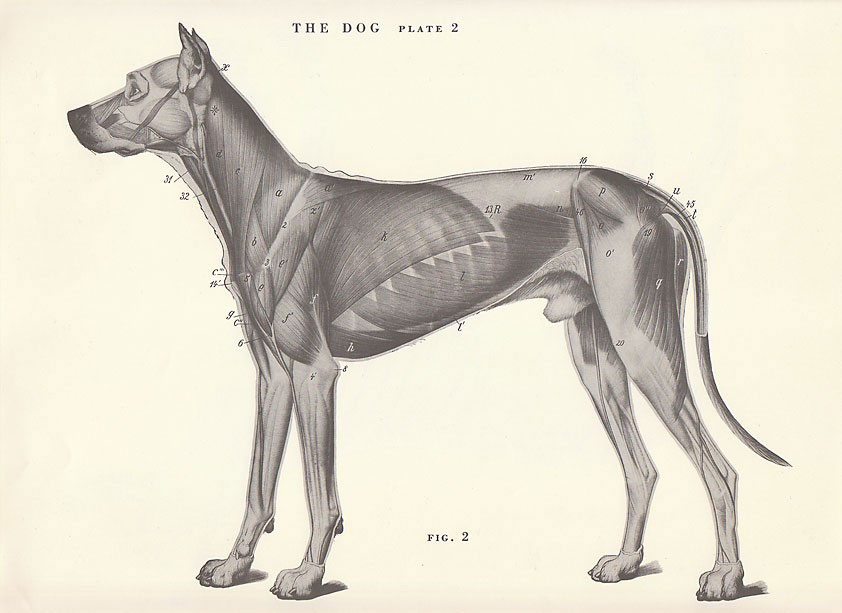
Toxic metals are abundant in the environment. Canine toxicity is the result of chronic exposures to a multitude of industrial and common household toxins, such as coal smoke, metal smelting, mining, exhaust fumes, landfills, chemicals, chemical fertilizers, pharmaceutical drugs, immunizations, pesticides, herbicides, fungicides, house dust and drinking water — to name a few.
The excessive production and use of heavy metals in our environment can expose dogs to acute cases of heavy metal poisoning, but this article is not about acute poisoning (which is fairly well understood). Instead, the health impact of persistent exposure to low levels of heavy metals will be discussed. Because nearly all dogs are victims of this insidious type of exposure.
We will review a few of the most common heavy metal toxins that are causing health problems for dogs today. All are directly toxic to cells, meaning their presence in the body is always negative. They also compete with the nutritional minerals in the body. A very interesting phenomena occurs when nutrient minerals are not available in adequate amounts. In this situation, the body will actually substitute toxic metals (minerals) in their place. This is like using tissue paper to plug a leak, at some point it fails. If the levels of toxic metals are too high in the body's soft tissues, they will displace vital nutrient minerals. Leading to cellular dysfunction, disease and death.
If we are to stop the escalating spiral of disease and bring health care costs under control, we must turn our healthcare system around. The only way to accomplish this is to address the causes of disease. We must reduce exposure to pollutants, support natural detoxification and provide appropriate nutrition. We must also examine health care practices such as vaccination protocols and the overuse of drugs and insecticides. Stephanie Chalmers, DVM, DACVD, CVHTop
Heavy Metal Accumulation
Heavy metals can enter the body through inhalation, intestinal absorption and even be absorbed through the skin, depending upon their chemical form. Elemental forms of heavy metals are not well absorbed, but organometallic forms are lipophilic, and can readily pass through membranes and even cross the blood-brain barrier (our neurological defense system).

Once absorbed into the body, heavy metals have a wide distribution in various organs, glands and the central nervous system. Some metals are bone seekers and ultimately settle into the teeth and skeletal system. Heavy metals then can effectively poison enzyme systems, increase free radical production and displace or compete with essential elements that make up metallo-enzyme complexes and compete with the absorption of nutritional minerals.
Toxin levels in body tissues increase with every generation, even when exposure levels stay the same. This is because the growing fetus is far more vulnerable than the adult and most toxins pass through the placenta in-utero. Since dogs have a much shorter lifespan than humans, this increased concentration over generations happens much more quickly than we see in people. They also live close to the ground, rolling around, licking and eating these toxins and heavy metals that have settled onto our lawns, streets, parks and floors.
On top of the persistent environmental exposures, most pet foods, when tested, commonly show high levels of toxins from both the food sources used in them and the processing to make them.
TopCanine in the Coal Mine

In the first study of its kind, Environmental Working Group found that American pets are polluted with even higher levels of many of the same synthetic industrial chemicals that researchers have recently found in people, including newborns. The research results show that America's pets are serving as involuntary sentinels of the widespread chemical contamination that scientists increasingly link to a growing array of health problems across all animals - wild, domesticated and human.
For dogs, the EWG study showed that blood and urine samples were contaminated with 35 chemicals altogether, including 11 carcinogens, 31 chemicals toxic to the reproductive system, and 24 neurotoxins. The carcinogens are of particular concern, since dogs have much higher rates of a variety of cancers than do humans, including 35 times more skin cancer, 4 times more breast tumors, 8 times more bone cancer, and twice the incidence of leukemia, according to the Texas A&M Veterinary Medical Center (2008). Between 20 and 25 percent of dogs die of cancer, making it the second leading cause of death in dogs (Purdue University Department of Veterinary Pathobiology 2000).
Like humans, pets are also exposed to toxic chemicals on a daily basis, and as this investigation found, are contaminated at higher levels. The presence of chemicals in dogs and cats sounds a cautionary warning for the present and future health of children as well. This study demonstrating the chemical body burden of dogs and cats is a wake-up call for stronger safety standards from industrial chemical exposures that will protect all members of our families, including our pets. Jane Houlihan, V.P. Research, Environmental Working GroupTop
5 common toxic metals that affect most dogs
One of the major contributors to canine health problems is the constant exposure to harmful toxins prevalent in our environment. Some of the most physically and neurologically damaging of these are the metals; aluminum, lead, mercury, arsenic, and cadmium. They contribute to everything from teeth problems and bad breath, to worsening allergies and skin diseases, to serious life threatening illnesses such as cancer, arthritis, kidney failure, congestive heart disease, liver diseases and diabetes. They damage the immune system, reducing defenses against infections as well as bacterial, viral and fungal diseases.
- Aluminum
-

Aluminum is the most common toxic element found at high levels in hTMA assessments of dogs. The most common source is their food. Other sources include vaccinations, medications, and in-utero transfer. In the mid 1980s, Gloria Dodd, DVM submitted 17 commercial dog and cat foods for testing by atomic absorption methods. The aluminum content ranged from a low of 17 mg% in canned wet foods, to a high of 855 mg% in the dry kibbled product.
Aluminum has been described as a protoplasmic poison and a pernicious and persistent neurotoxin. While the body is able to excrete aluminum in its natural form, the element, like mercury, is toxic to all life forms when concentrated in their tissues. It has a tendency to accumulate in the brain and nerve tissues and in the bones and teeth.
Aluminum interferes with the absorption of a number of essential elements including, iron, fluoride, phosphorus and calcium. It inhibits gastric muscle contraction and can cause constipation. This disrupting effect on the essential minerals leads to endocrine gland dysfunctions as these glands all depend on balanced mineral ratios. These dysfunctions include hypo- or hyperthyroidism, hypo- or hyper-adrenal, hypoglycemia, diabetes, dry dull coats, dry or flaky skin, and digestive disorders due to lack of pancreatic digestive enzymes and lowered stomach hydrochloric acid.
Aluminum is a neurotoxin. Central nervous system symptoms found in dogs with aluminum toxicity include chewing wallboards and door knobs and trying to catch imaginary objects in the air, and aggressive, violent behavior.
Aluminum's toxic effects on the skeletal system was first recognized in the late 1970s. In animal studies it has been found to induce anemia. Any impairment of kidney function will increase aluminum toxicity as the kidneys are the main route of excretion.
Aluminum can impair cellular energy transfer processes by interfering with phosphate and ATP metabolism. Since aluminum has an affinity for brain and nerve tissue, it can affect any organ in the body via the central nervous system. This can lead to a multitude of health problems and a weakening of the immune response. Aluminum toxic dogs are more susceptible to bacterial, fungal and viral diseases, chronic dermatitis, nasal discharges and loss of black pigment on the nose pad. Other symptoms of aluminum toxicity in dogs include extreme nervousness, weak muscles, seizures, loss of balance, and loss of energy.
- Lead
-

Lead can be found in all parts of our environment. Much of it comes from human activities including burning fossil fuels, mining, and manufacturing. The concentration of lead in polluted air varies inversely with altitude. Because lead is a heavy element, it settles out of the air onto the ground. Consequently, lead poisoning occurs frequently in dogs who spend their lives close to the ground. We are exposed to lead from aviation fuel, paint on older buildings, lead pipes, many industrial uses, coal burning, and pesticides which can contain high amounts of lead. Lead is present in things that dogs might pick up and chew on such as remote controls, cell phones, batteries, golf balls, ammunition fishing lures and sinkers. Lead can come from both the ceramic bowl your dog drinks from and from the water itself. Lead is used in the seams of canned food cans where it leaches into the food.
Calcium inhibits lead absorption and protects against lead accumulation in bones and teeth. Both young children and dogs are naturally fast metabolizers with lower levels of tissue calcium and magnesium. This low calcium to lead ratio leads to higher lead absorption into the tissues. Common storage sites for lead are bones and teeth, where it displaces calcium. During times of stress, when the body would normally release more calming calcium, it will release this stored lead into the bloodstream. This can bring lead into any of the body's organs, leading to cancer and organ failure. Besides calcium, lead also antagonizes and prevents the absorption of other important nutrient minerals such as iron and zinc. Lead interferes with iron metabolism and contributes to anemia. Other nutrients such as magnesium, copper, chromium, vitamin C and the B vitamins have been shown to protect against the effects of lead as well, either by decreasing its absorption and tissue deposition, or by reducing or blocking the effects of lead upon enzyme systems. An hTMA analysis will verify what your dog's tissue lead levels are and whether there are adequate amounts of the protective minerals present to prevent lead accumulation in the tissues.
Epilepsy can result from lead toxicity in dogs. In young children, hyperactivity may be the first presenting symptom, so if you have a hyperactive dog you can suspect high tissue lead levels. Other emotional symptoms of a lead body burden include aggression, violent behavior, antisocial behavior, poor concentration or learning capacity. It can take years before lead exposure reaches dangerous levels, so you might not recognize symptoms until your dog is older. Since lead can block and prevent many enzyme functions, lead toxicity can lead to damage to the heart, kidneys, liver, gastrointestinal tract, and central nervous system. Symptoms of lead toxicity in dogs include lack of appetite, vomiting, abdominal pain, constipation followed by diarrhea, crunching of jaws, blindness, seizures or muscle spasms, behavior changes, circling, and loss of balance and agility.
- Mercury
-
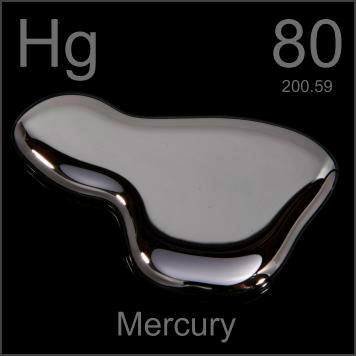
Mercury is one of the most studied toxic heavy metals and the lethal effects of both acute toxic exposure and chronic low-level exposures are well documented. Exposure to mercury occurs from breathing contaminated air, ingesting contaminated water and food, and having dental and medical treatments. Mercury, at high levels, may damage the brain, kidneys, and developing fetus. This chemical has been found in at least 714 of 1,467 National Priorities List sites identified by the Environmental Protection Agency. We are all told to avoid eating too much fish and pregnant women are told to avoid it completely due to the problems that mercury cause to the growing fetus. Fish, which should be one of the best possible and most nutritious foods we can eat!
Methylmercury is the preservative used in most vaccines, mercury can be found in prescription medications, it is present in many commercial dog foods. It is often used in household products that dogs are exposed to such as batteries, light bulbs, fabric softeners, latex gloves, paint, plastics, ink, and solvents. Mercury vapors are released from such things as home renovations involving old paint, broken thermometers and thermostats. It will concentrate at floor level where dogs are lying or walking. Even some cosmetics contain it …consider this when your dog licks your face. Mercury salts are sometimes used in skin lightening creams and in antiseptic creams and ointments. Like other heavy metals, it is in our air, water and ground where our dogs are continually exposed.
Mercury prevents glucose transport, thus reducing cellular energy availability. Mercury antagonizes and prevents the absorption of important nutrient minerals such as zinc, iron, selenium and sulfur. An hTMA analysis will verify what your dog's tissue mercury levels are and whether there are adequate amounts of the protective minerals present to prevent mercury accumulation in the tissues.
Mercury accumulates in the brain and central nervous system. Mercury also adversely affects your dog's overall immune system by attaching to the immune cell structure and altering their ability to function normally. Mercury can cause kidney and cardiac diseases, respiratory problems, arthritis, and gum disease in your dog.
Symptoms of high mercury tissue levels include loss of balance, fatigue, vomiting, hair loss, diarrhea, weakness, and excessive salivation. High levels can also interfere with enzyme activity, resulting in blindness and paralysis. It also causes convulsions, anorexia, tremors, swollen gums and behavior problems in animals.
- Arsenic
-
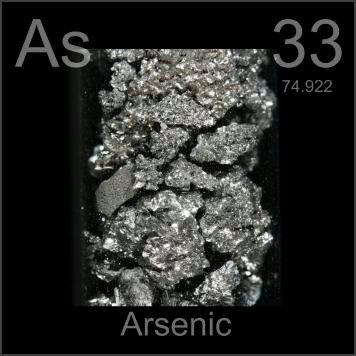
Arsenic is public enemy number one on ATSDR's Priority List of Hazardous Substances list. (Lead is #2 and mercury is #3.) Arsenic is a known carcinogen and affects the skin, digestive system, liver, nervous system and respiratory system. Arsenic compounds can create reactions in the body that disrupt enzymes that are involved in respiration of cells, fat and carbohydrate breakdown and their metabolism. The accumulation of toxic levels of arsenic can result in paralysis, coma, cardiovascular collapse and death.
Today in the United States, the quantity of arsenic released by human activities exceeds amounts released from natural sources by at least threefold. The major sources of arsenic release to the environment are;
- Coal fired power plants.
- Arsenic-treated lumber.
- Arsenic in drinking water from wells.
In modern industrial agriculture (e.g., CAFO's) organic forms of arsenic are actually fed to pigs and poultry to improve production. And in the case of swine, to treat diarrhea. This meat is then used in commercial food products. Arsenic has been found in at least 1,149 of the 1,684 National Priority List sites identified by the Environmental Protection Agency. Also, arsenic can be found in many commonly used products including fungicides, pesticides, herbicides, laundry products, cigarette smoke, paints, and wood preservatives. Global industries such as mining and smelting, chemical and glass manufacturing produce arsenic as a by-product. This in turn finds its way into our water supplies and food sources.
In addition, water and soil concentrations are far higher in areas where arsenic mineral deposits have been mined. Soil with high levels of arsenic is also an exposure risk for dogs due to mouthing and play activities.
For years the most common cause of arsenic poisoning in dogs was the consumption of rodent trap bait and pesticides such as ant bait which contained arsenic. This type of poisoning is less common since the government started regulating these products. Arsenic does not breakdown and will build up in body tissues over time. Since the lethal dose only is 1 to 12 mg of arsenic per pound of body weight, this buildup of arsenic can cause serious health problems. Therefore it is important to know the symptoms of arsenic poisoning, whether the result of an accidental consumption of a household product or the slow accumulation over time. Symptoms include drooling, vomiting, bloody diarrhea containing mucus, bloody urine, muscle cramps, weakness, hair loss, skin rashes, gastrointestinal pain, convulsions, trembling and staggering.
Arsenic is stored in the hair follicles, skin, and nails. Throughout history it has been a popular choice of poisoners because it mimics so many chronic diseases that cannot be diagnosed except with hair analysis. An hTMA analysis is an effective measure of your dog's arsenic body burden.
- Cadmium
-
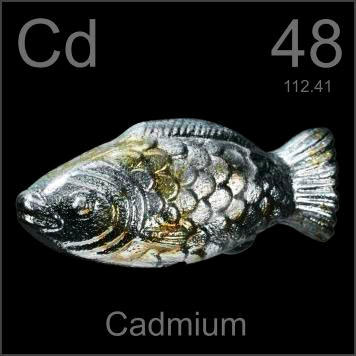
Cadmium is a known carcinogen and affects the cardiovascular, reproductive, respiratory and gastrointestinal systems, and has many detrimental effects on development. Cadmium damages the kidneys, lungs, and bones. Long-term exposure to lower levels of cadmium in air, food, or water leads to a buildup of cadmium in the kidneys and possible kidney disease. Other long-term effects are lung damage and fragile bones.
Cadmium and cadmium compounds are known carcinogens. It causes a reduction in the production of the critical white blood cells (T-Lymphocytes) which defend the body by destroying harmful free radicals and cancer cells. A few studies in animals indicate that younger animals absorb more cadmium than adults. Animal studies also indicate that the young are more susceptible than adults to a loss of bone and decreased bone strength from exposure to cadmium. In laboratory animals, cadmium causes decreases in fetal or pup body weight, skeletal malformations, and behavioral alterations. The list of dog diseases that cadmium can promote is extensive, including cancer, diabetes, arthritis, cardiovascular disease, kidney disease, bone disorders, and digestive problems. Cadmium toxicity can even contribute to the loss of the dog's natural and critical sense of smell.
Symptoms of high tissue cadmium levels include fatigue, hair loss, increased susceptibility to infection, slow healing of wounds, skin lesions, loss of smell, yellow coloration of teeth, inflammation of mucous membrane of the nose, and loss of appetite.
Cadmium is used in the production of many industrial products, including batteries, pigments, metal coatings, and plastics. Dogs are exposed by breathing secondhand smoke or living with a smoker. Cadmium aerosols with small particle sizes, such as found in cigarette smoke, is more absorbed than larger particle sizes. Cadmium contaminated foods are another source, low levels are found in all foods, highest levels are found in shellfish, liver and kidney meats. Cadmium has been found in at least 1,014 of the 1,669 National Priorities List sites identified by the Environmental Protection Agency.
Cadmium antagonizes and prevents the absorption of important nutrient minerals such as zinc and sulfur. Cadmium displaces zinc, which leads to zinc deficiency, resulting in slow wound healing, premature aging and reproductive problems. Since most commercial dog foods are low in zinc, this is a big concern. Zinc is a component of many vital enzymes promoting a healthy immune system, liver, and bones. Adequate zinc levels will inhibit absorption and retention of cadmium.
hTMA will analyze your dog's tissue cadmium and zinc levels and verify whether there are adequate amounts of the protective minerals present to prevent cadmium accumulation in the tissues.
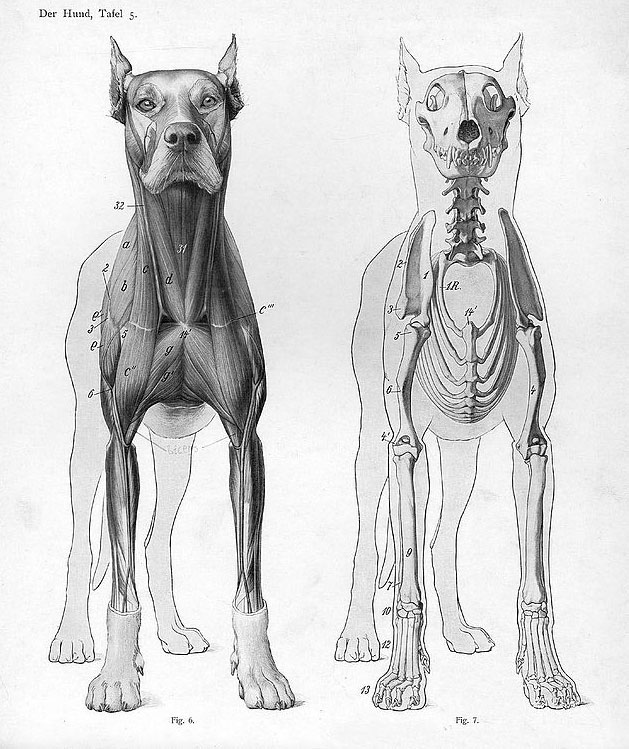
To understand what's going on inside your canine, pay close attention to their anatomy and physiology. Behavior and symptomatic responses are the best clues to uncovering health mysteries.
TopToxic Body Burden Signs and Symptoms
You need to be like Sherlock Holmes to discover some of the clues necessary to understand your dog's health problems. Listen closely, and patiently observe your dog. What is their body and behavior telling you?
Below is a list of some of the symptoms and signs to watch for (note: some listings can be perfectly normal, in these instances question whether there is new abnormality within these otherwise normal behaviors)
- Brain
-
- depression
- anxiety
- aggression
- weakness
- fatigue
- lethargy
- sleepiness
- trembling
- circling
- stumbling
- falling
- tremors, seizures
- Eyes
-
- redness
- swelling
- discharge
- Nose
-
- running
- crusting
- discharge
- loss of black color on nose pad
- decreased sense of smell
- Ears
-
- discharge
- debris
- odor
- twitching
- scratching
- shaking
- difficulty hearing
- Mouth
-
- gum disease
- excessive tartar
- yellowing of teeth
- salivation (drooling)
- foul odors
- Throat
-
- coughing
- gagging
- sneezing
- retching or vomiting
- Chest
-
- irregular breathing
- shortness of breath
- prolonged or heavy panting
- Stomach
-
- lack of appetite
- vomiting
- digestive disorders
- offensive gas
- obesity
- Buttocks
-
- constipation
- straining
- diarrhea
- blood in stools
- frequent urination
- dribbling
- blood in urine
- scooting (scrubbing the floor)
- worms
- Coat and skin
-
- dry or flaky skin
- dull dry coat
- rashes
- slow wound healing
- hair loss
- dander
- color change
- discharge
- excessive biting
- excessive scratching
- bite marks
- evidence of parasites
- excessive licking
- lumps or bumps
- tumor(s)
- Signs of pain
-
- lameness in limbs
- stiffness when getting up
- hiding in unusual areas
- uncontrollable shaking
- excessive panting
- listlessness
- crying or whimpering
- food falling out of mouth
- excessive drooling
- sensitivity when chewing
Testing for Heavy Metals
Metal "toxicity" is designated by the measurable amount above a predetermined clinical level for some heavy metals (when indicated using tissue sampling and testing). Clinical determination is based on this tissue level elevation, combined with accompanying signs and symptoms related to the specific metal in question.
In contrast, a toxic burden actually falls below the defined limit and can exist without accompanying signs and symptoms commonly associated with that specific metal. Under these circumstances, it should be termed a burden or increased burden, and should not be referred to as a toxicity. This is not to say that the particular metal is not having a metabolic impact or that it should not be addressed. A dog can have a heavy metal burden, while not quite a toxicity, but still manifest many signs and symptoms due to an adverse or allergic reaction to that metal.
Body tissue used to test for toxic heavy metals include blood, urine, hair, fingernail, and fecal samples. Most veterinarian offices are not equipped to perform these tests and samples must be sent to appropriate laboratories that perform such testing. For acute exposure testing (within days or up to several months), blood, urine, and fecal analysis are the most accurate. When testing to determine long term exposure and it's cumulative impact, hair and fingernail tissue are most accurate.
TopBlood Serum test vs. hTMA
The blood and serum do contain minerals, but they may not be completely representative of the body's mineral storage. In many cases, the serum level of minerals is maintained at the expense of tissue concentration (homeostatic mechanisms). Serum concentrations may fluctuate with emotional changes, the time of day the blood is drawn, or foods eaten prior to taking a sample. For example, serum magnesium can fluctuate depending upon the blood drawing technique. The longer the tourniquet is applied, the higher the magnesium rises as a result of tissue hypoxia.
Blood analysis for minerals is a good indicator of the transport of minerals to and from the storage areas of the body (extracellular).
Excess accumulation of minerals in the body are often undetected in the serum due to their removal from the blood for deposition into the tissues. When this occurs, the mineral may fail to be excreted through the urine or intestinal tract. Thirty to forty days following an acute exposure to the toxic metal lead, for instance, elevated serum levels may be undetectable as a result of the body's removing the lead from the serum as a protective measure and depositing the metal into such tissues as the liver, bones, teeth, and hair.
Minerals may fluctuate between the serum and tissues in acute or chronic conditions. This is seen with copper and iron during infections, inflammatory disorders, and certain malignancies. Also, calcium loss from the body can become so advanced that severe osteoporosis develops without any appreciable changes noted in the blood levels of calcium.
Hair has been used as one of the tissues of choice by the Environmental Protection Agency in determining toxic metal exposure. A 1980 report released by the E.P.A. stated that human hair could be effectively used for biological monitoring of toxic metals. This report confirmed the findings of other studies, which concluded that hair might be a more appropriate tissue for studying community exposure to toxic metals than blood or urine analysis. Investigators in Japan, Sweden, Canada, and the United States have shown that the concentrations of elements in the hair provide an accurate and permanent record of exposure.
Heavy metals will often be elevated when there has been a chronic exposure. However, the hTMA can indicate the "tip of the iceberg" so to speak, in that heavy metals can be stored or sequestered in organs and tissues throughout the body. Lead and cadmium for instance are bone seekers. Eventually they will be sequestered into the bone. As bone turnover occurs, lead and cadmium will constantly be released back into circulation and continually be incorporated into the hair shaft, therefore, hTMA will reveal the chronic nature of exposure. However, with therapy aimed at rebalancing the mineral pattern, removal of lead and cadmium will be hastened. This will result in even higher levels on follow-up hTMA tests as greater amounts are being released from storage areas.
Advantages of hTMA
- Hair specimen can be collected more quickly and easily than blood, urine, or any other tissue, using a non-invasive method.
- Hair analysis is more cost-effective than mineral testing through other means.
- Unlike blood, hair is less susceptible to the homeostatic mechanisms that quickly affect trace element levels.
- Long-term deviations of mineral retention or losses are more easily detected in hair than blood.
- Concentrations of most elements in the hair are significantly higher than found in the blood and other tissues.
- Hair provides a record of past as well as present trace element levels, i.e. biological activity.
- Hair provides information of substances entering the hair from the blood serum as well as from external sources.
- Hair is invaluable in the assessment of toxic metal levels.
Resolving Toxicity
Chelation therapy is often prescribed for detoxification from heavy metal poisoning. Chelating agents are typically administered in cases of acute toxicity. However, the removal of toxic heavy metals through chelation therapy can be extremely difficult for a dog, and must be administered under the care of a qualified physician. The tests and therapy can be expensive and risky also.
Chelation progress must be closely monitored by a specialist for signs of complications. Chelation compounds work to remove toxic heavy metals by binding to toxic metal ions and suspending them until they can be excreted.
Chelation compound examples include:
- Ethylenediaminetetraacetic acid (EDTA) is frequently used for severe cases of lead poisoning.
- Dimercaprol binds to both arsenic and mercury.
- Dimercaptosuccinic acid, or DMSA, binds to lead, mercury, and arsenic.
Chelation therapy can be an effective, and often necessary emergency treatment for acute poisoning. But what about the chronic exposure to toxins that your dog faces every day? hTMA is effective for protection against persistent, low-level chronic exposure. hTMA nutritional therapy also keeps the body's immune system functioning properly (allowing it to better defend itself against acute exposures as well).
With hTMA, the use of harsh chelation therapy is unnecessary, except in very rare or very high-level exposure cases. Evidence now shows that even low lead levels can adversely affect neurological function. Low mercury levels can affect fetal development. All of these toxic metals have adverse effects at low levels. hTMA is an effective screening tool for analyzing the body burden of these incessant exposures.
Since poor diet is associated with higher heavy metal accumulation, clinical nutrition can relieve and prevent low level metal toxicities and the disorders that accompany them. When nutrient minerals are available at the optimal levels and ratios, they not only help protect against the absorption of toxic metals, they also assist and hasten removal.
Nutrients that are known to protect against heavy metal accumulation include; calcium, magnesium, iron, copper, zinc, selenium, vitamins A, C, E, B-6, B-12, pectin, lecithin, glutathione and other antioxidants. Many of the essential amino acids found in whole, unprocessed foods help also. Specialty foods like kelp, garlic, and brewer's yeast can add detoxification benefits. Providing protective nutrients in the optimal amounts and ratios will prevent your canine from becoming undernourished and thus susceptible to the accumulation of toxic metals in their body tissues.
TopConclusion

hTMA is the safest most reliable way to identify toxic burden and remove toxic heavy metals by replacing them with preferred minerals. Follow-up re-tests allow you to monitor detoxification progress.
TopReferences and Resources
- Mortality in North American Dogs J Vet Intern Med. 2011 Mar;25(2):187-98.)
- Balancing Biochemistry David L. Watts, Ph.D.
- Trace Elements in Human and Animal Nutrition 5th Ed., U.S. Dept. of Agriculture, 1986.
- Mental and Elemental Nutrients, Carl. C. Pfeiffer, Ph. D., M.D.
- Aluminum Toxicity in Infants and Children American Academy of Pediatrics, 1996.
- Hair Analysis and Heavy Metals - Hidden Metal Detox David L. Watts, Ph.D., 2009.
- Implications of Lead Toxicity David L. Watts, Ph.D., 1985.
- A Small Dose of Toxicology Steven Gilbert
- CDC Agency for Toxic Substances and Disease Registry
Heavy-metal Quick FAQs
Recommended Product
- Luma Pet (nutritional supplement) LumaPet™ is designed to support healthy digestion, promote immune function, and strengthen the gut lining to shield your pet from daily environmental exposures.
Disclaimer
Please consult your own health care provider regarding any medical issues or concerns. Information presented on this website is intended for educational purposes ONLY and should not be used as a substitute for the advice of a physician or other licensed health practitioner. The information provided is not intended to be used for diagnosis, treatment or prescription for any condition, physical or emotional, real or imagined. The information presented may change without notice, or may be subject to debate. Accuracy cannot be guaranteed. Health Elite LLC will not be held responsible to any person or organization regarding any medical issues; diseases, conditions, symptoms, diagnosis, treatment or any side effects that may arise due to information or content found on this website, or for any loss, damage, expense, fine, injury, or penalty that may arise or result from the use of any information, recommendations, opinions and/or errors in website content. Statements contained herein have not been evaluated by the FDA.
Call your doctor or 911 if you think you may have a medical emergency.